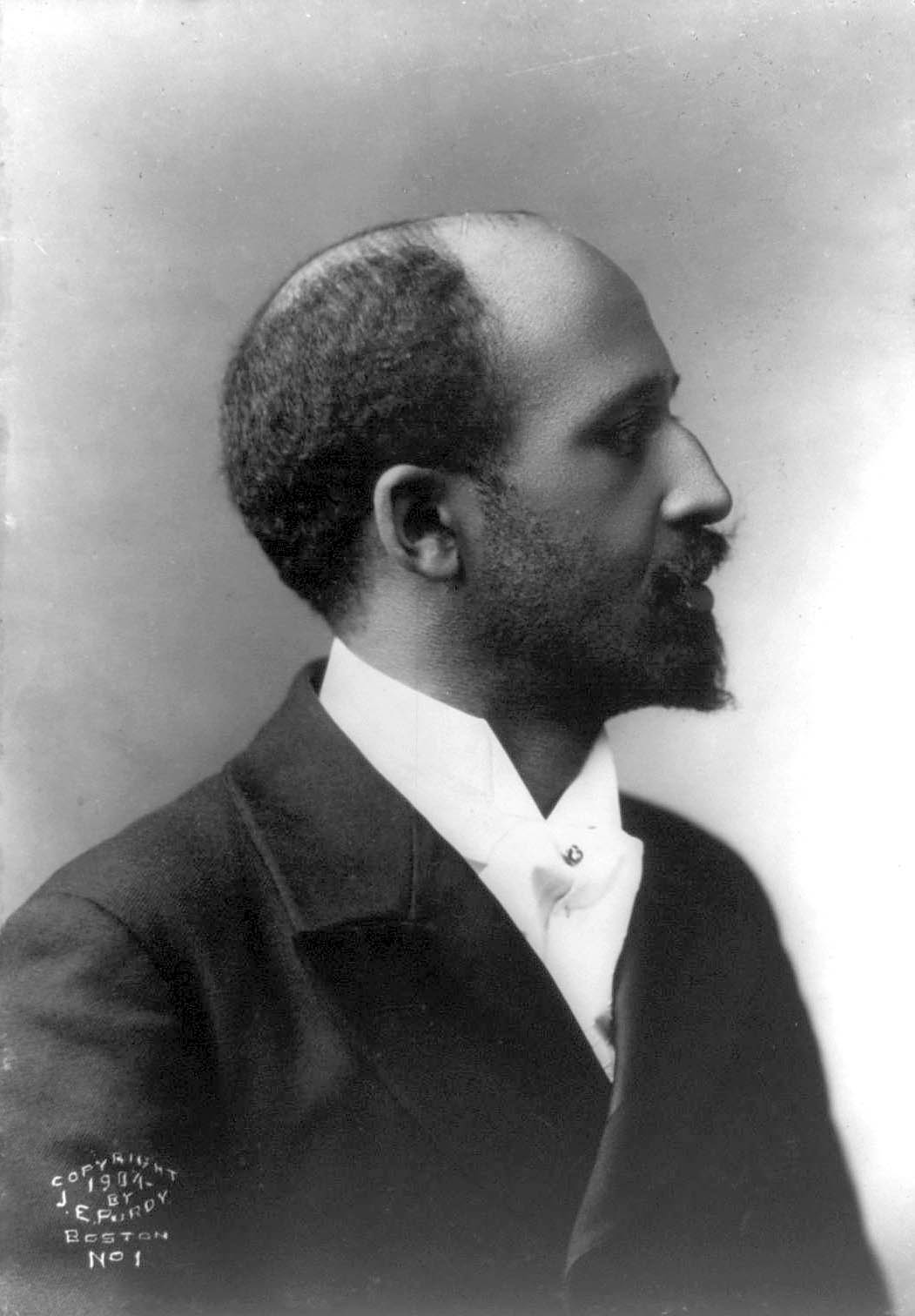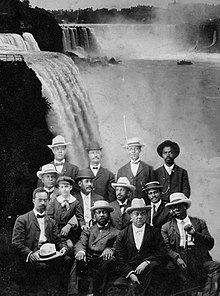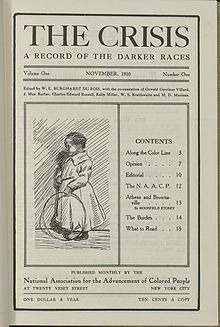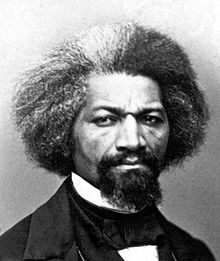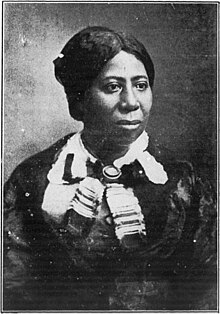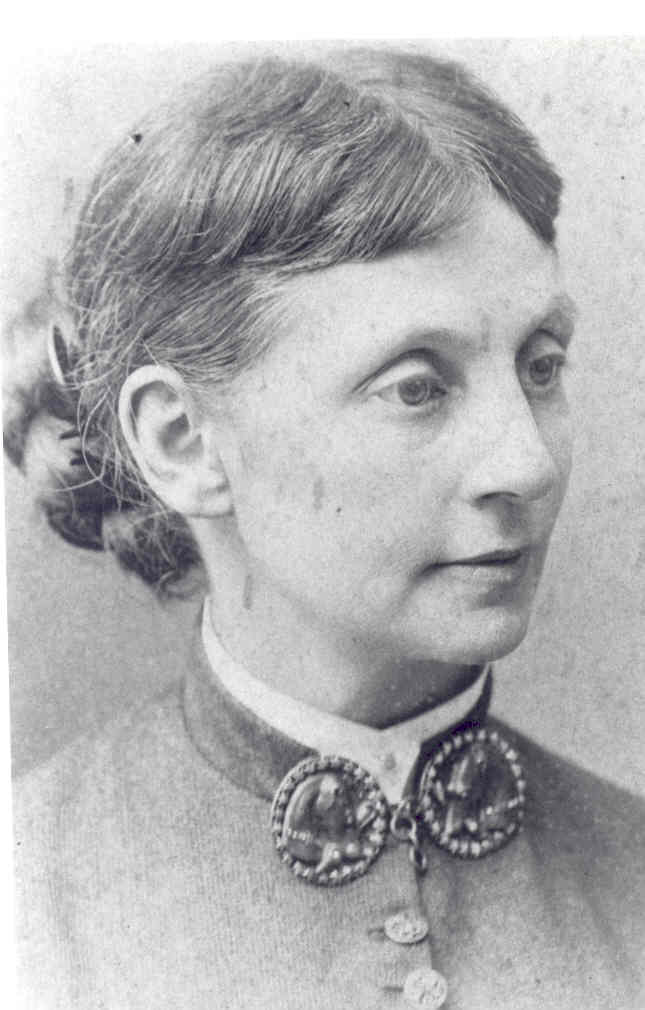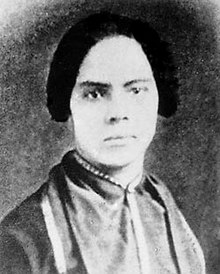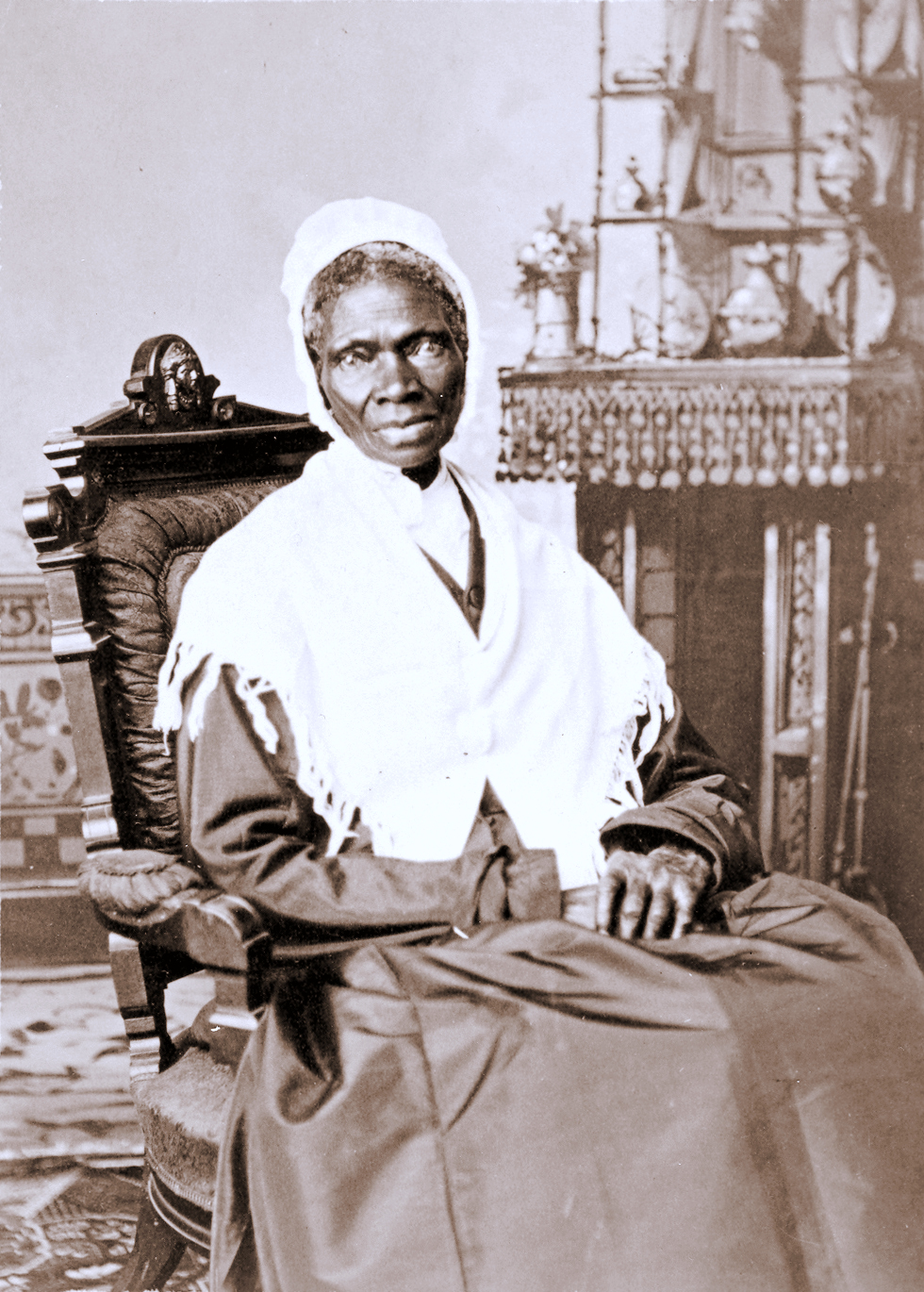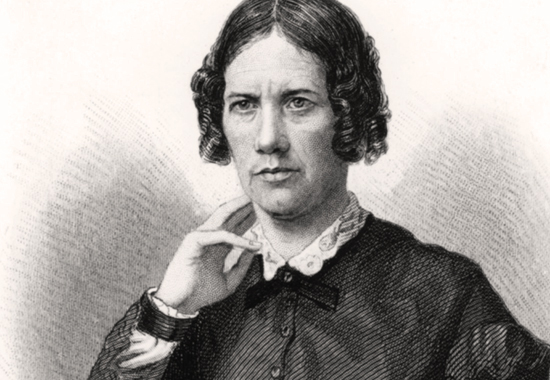1. For one thing, when Sister Sojourner was born, she was given the name Isabella Baumfree.
2. And she was born into slavery at the tail end of the 18th century, when owning human beings and forcing them to work for you all their lives was still perfectly legal. up north in New York State, in Swartekill, a tiny village by the Hudson River. About a hundred miles north of NYC.
3. Her father was born in Ghana. He might have grown up in western Africa, but like many thousands of his fellow Africans, he was kidnapped and sold into slavery. Had to suffer that miserable boat trip across the Atlantic. He was given the name James Baumfree. Both James and Elizabeth, his wife, whose folks were stolen from Ginea, are known to history thanks to their stalwart daughter, 'Belle.'
4. Belle wasn't allowed to be with Robert, the man she loved because he was owned by another white man. How sad and rotten is that?
5. With Robert and another man to whom Belle was pretty much assigned, she had five children, Diana, Peter, Elizabeth, Thomas, and Sophia.
6. In time, Belle escaped to freedom with baby Sophia. "I walked off, believing that to be right."
7. In time, Belle went to court to get back her little boy, Peter, who'd been illegally sold down south. She was one of the first and few women of color to go to law and win.
8. Years of hard labor for her masters made Belle very strong. And she was tall, 6 feet tall.
9. In the summer of 1843, as hundreds of pioneers were having the adventures of their lives on the Oregon Trail, Belle Baumfree took a new name: She would be known as Sojourner Truth. She would go walking from place to place, preaching her truth, that slavery was a wicked thing. That is must end.
12. Oh the things that are to be known about this valiant woman number far and away more than a dozen. That she recruited and aided African American soldiers, serving in the Union Army. That she was injured by a brutal, furious white man when she tried to integrate the streetcars of Washington, DC. (He was probably scared, too. No excuse, but change IS pretty danged scary. It's hard when old ways are passing.) But for sure I want you to know the moment in 1851 when Sojourner Truth walked to the front of a fine old church in Akron, Ohio, and testified. After all, wasn't she a woman?
SOJOURNER TRUTH.
The leaders of the movement trembled on seeing a tall, gaunt black woman in
a gray dress and white turban, surmounted with an uncouth sun-bonnet, march
deliberately into the church, walk with the air of a queen up the aisle, and
take her seat upon the pulpit steps. A buzz of disapprobation was heard all
over the house, and there fell on the listening ear, "An abolition affair!"
"Woman's rights and niggers!" "I told you so!" "Go it, darkey!"
I chanced on that occasion to wear my first laurels in public life as
president of the meeting. At my request order was restored, and the business
of the Convention went on. Morning, afternoon, and evening exercises came and
went. Through all these sessions old Sojourner, quiet and reticent as the
"Lybian Statue," sat crouched against the wall on the corner of the pulpit
stairs, her sun-bonnet shading her eyes, her elbows on her knees, her chin
resting upon her broad, hard palms. At intermission she was busy selling the
"Life of Sojourner Truth," a narrative of her own strange and adventurous
life. Again and again, timorous and trembling ones came to me and said, with
earnestness, "Don't let her speak, Mrs. Gage, it will ruin us. Every
newspaper in the land will have our cause mixed up with abolition and
niggers, and we shall be utterly denounced." My only answer was, "We shall
see when the time comes."
The second day the work waxed warm. Methodist, Baptist, Episcopal,
Presbyterian, and Universalist ministers came in to hear and discuss the
resolutions presented. One claimed superior rights and privileges for man, on
the ground of "superior intellect"; another, because of the "manhood of
Christ; if God had desired the equality of woman, He would have given some
token of His will through the birth, life, and death of the Saviour." Another
gave us a theological view of the "sin of our first mother."
There were very few women in those days who dared to "speak in meeting"; and
the august teachers of the people were seemingly getting the better of us,
while the boys in the galleries, and the sneerers among the pews, were hugely
enjoying the discomfiture, as they supposed, of the "strong-minded." Some of
the tender-skinned friends were on the point of losing dignity, and the
atmosphere betokened a storm. When, slowly from her seat in the corner rose
Sojourner Truth, who, till now, had scarcely lifted her head. "Don't let her
speak!" gasped half a dozen in my ear. She moved slowly and solemnly to the
front, laid her old bonnet at her feet, and turned her great speaking eyes to
me. There was a hissing sound of disapprobation above and below. I rose and
announced "Sojourner Truth," and begged the audience to keep silence for a
few moments.
The tumult subsided at once, and every eye was fixed on this almost Amazon
form, which stood nearly six feet high, head erect, and eyes piercing the
upper air like one in a dream. At her first word there was a profound hush.
She spoke in deep tones, which, though not loud, reached every ear in the
house, and away through the throng at the doors and windows.
"Wall, chilern, whar dar is so much racket dar must be somethin' out o'
kilter. I tink dat 'twixt de niggers of de Souf and de womin at de Norf, all
talkin' 'bout rights, de white men will be in a fix pretty soon. But what's
all dis here talkin' 'bout?
"Dat man ober dar say dat womin needs to be helped into carriages, and
lifted ober ditches, and to hab de best place everywhar. Nobody eber helps me
into carriages, or ober mud-puddles, or gibs me any best place!" And raising
herself to her full height, and her voice to a pitch like rolling thunder,
she asked. "And a'n't I a woman? Look at me! Look at my arm! (and she bared
her right arm to the shoulder, showing her tremendous muscular power). I have
ploughed, and planted, and gathered into barns, and no man could head me! And
a'n't I a woman? I could work as much and eat as much as a man--when I could
get it--and bear de lash as well! And a'n't I a woman? I have borne thirteen
chilern, and seen 'em mos' all sold off to slavery, and when I cried out with
my mother's grief, none but Jesus heard me! And a'n't I a woman?
"Den dey talks 'bout dis ting in de head; what dis dey call it?"
("Intellect," whispered some one near.) "Dat's it, honey. What's dat got to
do wid womin's rights or nigger's rights? If my cup won't hold but a pint,
and yourn holds a quart, wouldn't ye be mean not to let me have my little
half-measure full?" And she pointed her significant finger, and sent a keen
glance at the minister who had made the argument. The cheering was long and
loud.
"Den dat little man in black dar, he say women can't have as much rights as
men, 'cause Christ wan't a woman! Whar did your Christ come from?" Rolling
thunder couldn't have stilled that crowd, as did those deep, wonderful tones,
as she stood there with outstretched arms and eyes of fire. Raising her voice
still louder, she repeated, "Whar did your Christ come from? From God and a
woman! Man had nothin' to do wid Him." Oh, what a rebuke that was to that
little man.
Turning again to another objector, she took up the defense of Mother Eve. I
can not follow her through it all. It was pointed, and witty, and solemn;
eliciting at almost every sentence deafening applause; and she ended by
asserting: "If de fust woman God ever made was strong enough to turn de world
upside down all alone, dese women togedder (and she glanced her eye over the
platform) ought to be able to turn it back, and get it right side up again!
And now dey is asking to do it, de men better let 'em." Long-continued
cheering greeted this. "'Bleeged to ye for hearin' on me, and now ole
Sojourner han't got nothin' more to say."
Amid roars of applause, she returned to her corner, leaving more than one of
us with streaming eyes, and hearts beating with gratitude. She had taken us
up in her strong arms and carried us safely over the slough of difficulty
turning the whole tide in our favor. I have never in my life seen anything
like the magical influence that subdued the mobbish spirit of the day, and
turned the sneers and jeers of an excited crowd into notes of respect and
admiration. Hundreds rushed up to shake hands with her, and congratulate the
glorious old mother, and bid her God-speed on her mission of "testifyin' agin
concerning the wickedness of this 'ere people."







